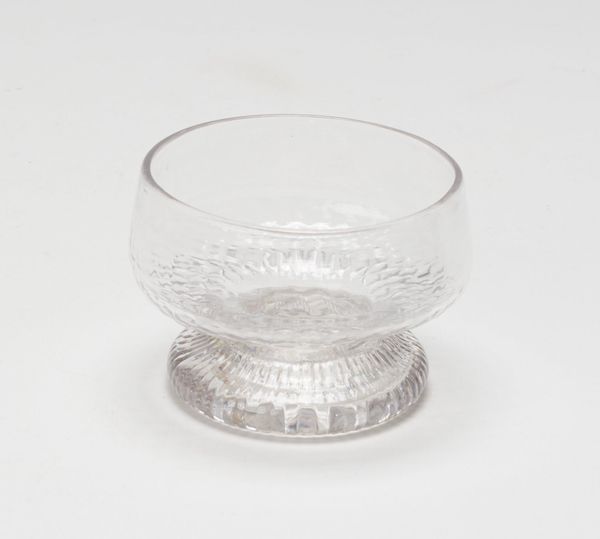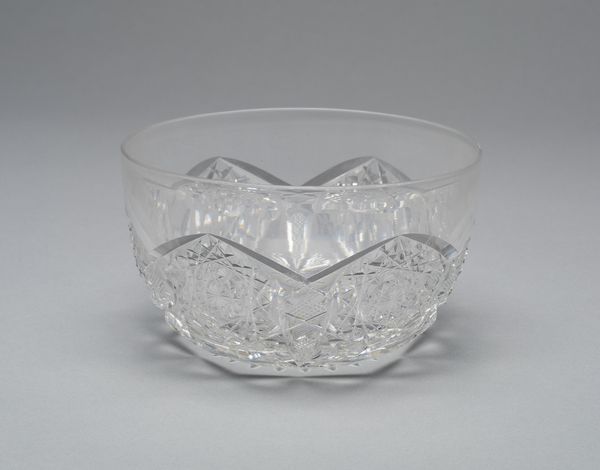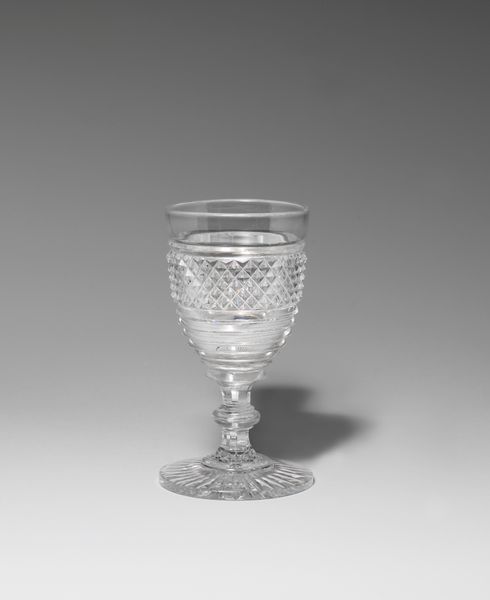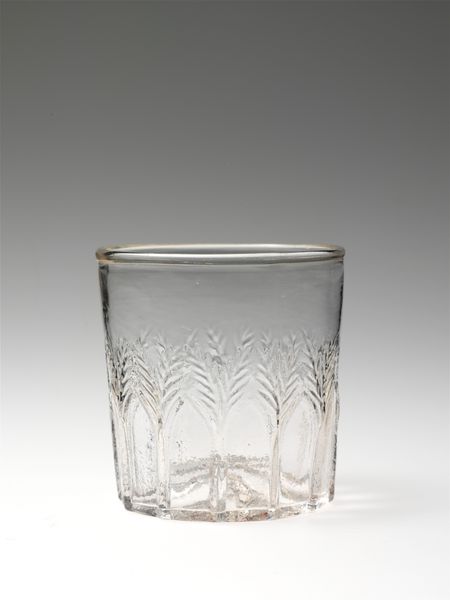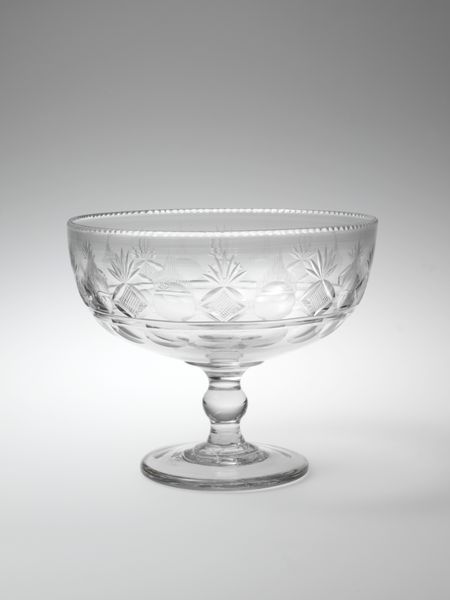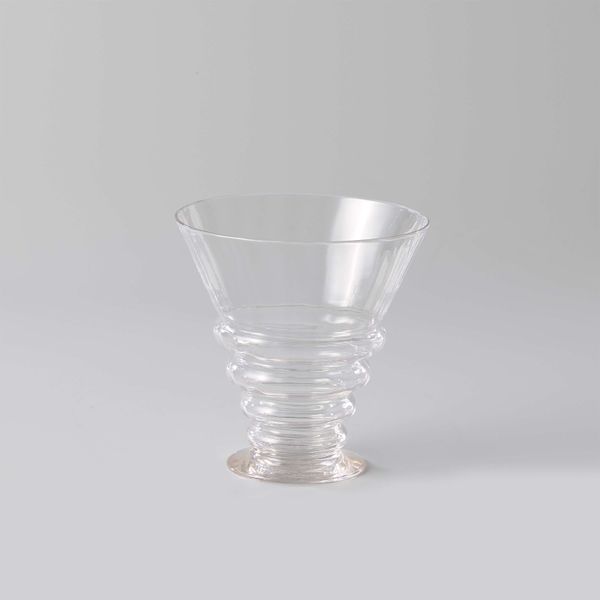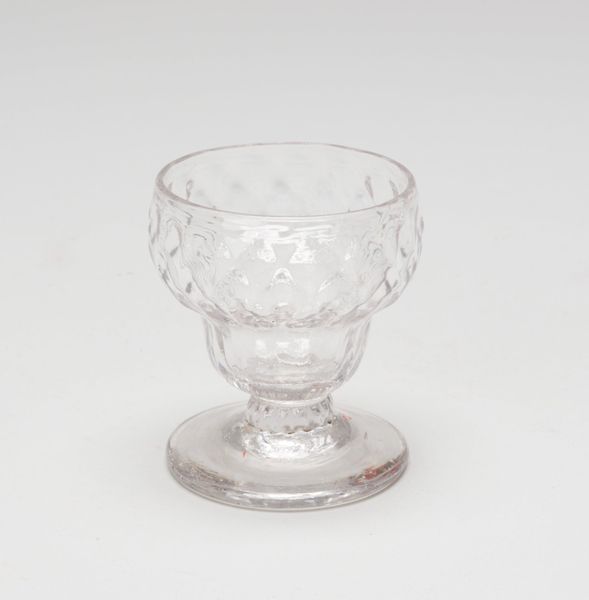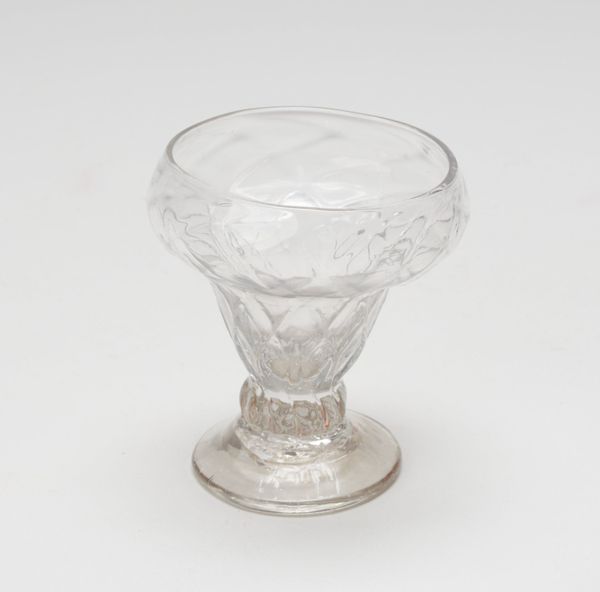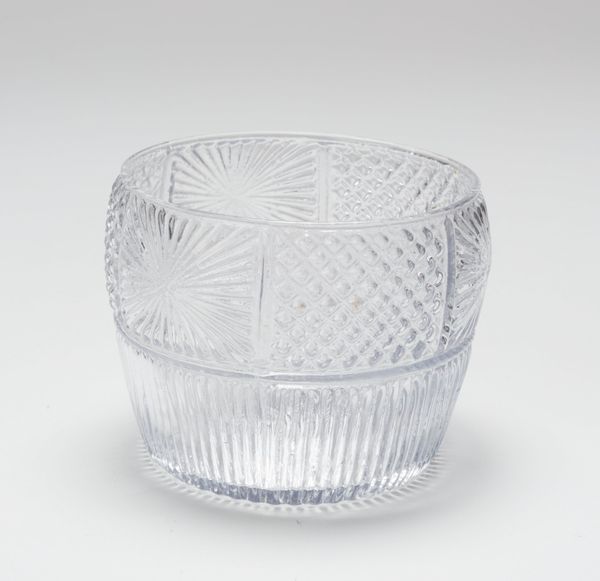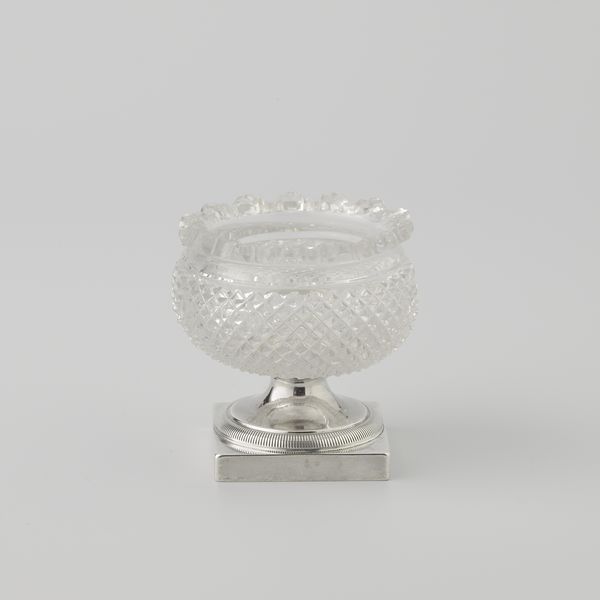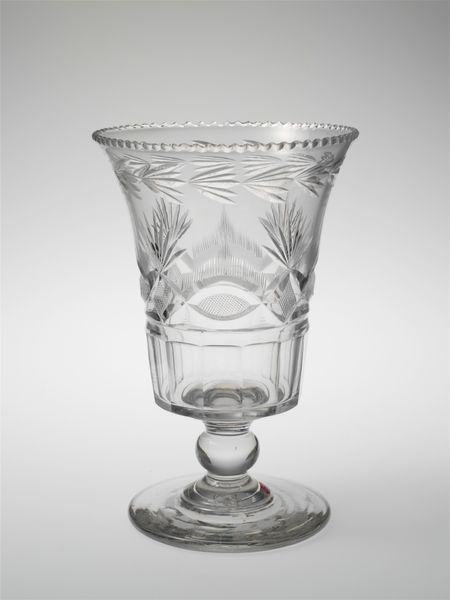
glass
#
glass
#
england
#
romanticism
#
decorative-art
Dimensions: 3 3/4 x 5 5/8 in. (9.5 x 14.3 cm)
Copyright: Public Domain
Editor: This is the "Wine Rinser," crafted in 1818 by Pellatt & Green. It’s currently held at the Metropolitan Museum of Art. The intricate cut glass makes it sparkle. How do you approach something like this? Curator: Well, immediately, I’m drawn to the material. Glass production in the early 19th century was undergoing significant change. Consider the social context. This isn't just any glass; it's cut glass. Who was consuming wine from such a vessel, and what did that signify about their status and access to luxury goods? Editor: So you're looking at it less as a beautiful object and more as a product of a specific social class? Curator: Precisely! Think about the labor involved in producing this level of detail. Glassblowing and cutting were highly skilled trades. Who were these laborers? What were their working conditions? The 'Romantic' style is less about dreamy aesthetics, and more about the material means behind its opulence. How was it traded and sold, reaching consumers who could afford such pieces? Editor: That's a perspective I hadn't fully considered. I was focusing on the visual appeal, but the materials themselves tell a deeper story about production and class. Curator: It prompts us to challenge the boundary between “high art” and “decorative art.” It makes us ask, "Where does art begin? Is it just at the point of artistic conception or also during the physical processes required to create the object?". Considering consumption and production offers powerful critical frameworks to analyse all types of objects. Editor: I'll definitely be approaching artworks with a more material-focused lens from now on. Thank you! Curator: It's a path to enriching our understanding of not just the artwork, but the society that produced it.
Comments
No comments
Be the first to comment and join the conversation on the ultimate creative platform.
